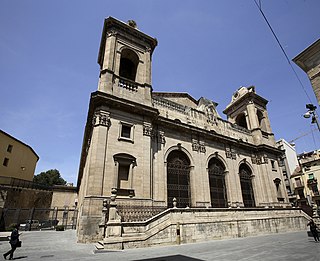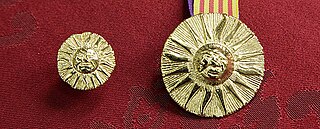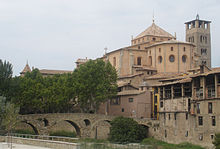
Vic is the capital of the comarca of Osona, in the province of Barcelona, Catalonia, Spain. Vic is located 69 km (43 mi) from Barcelona and 60 km (37 mi) from Girona.

The Diocese of Urgell is a Latin Church diocese of the Catholic Church in Catalonia (Spain) and Andorra in the historical County of Urgell, with origins in the fifth century AD or possibly earlier. It is based in the region of the historical Catalan County of Urgell, though it has different borders. The seat and Cathedral of the bishop are situated in la Seu d'Urgell town. The state of Andorra is a part of this diocese.
The bishop of Tortosa is the ordinary of the Roman Catholic Diocese of Tortosa in Catalonia, Spain. The bishop is a suffragan of the archbishop of Tarragona.

The Diocese of Lleida, or Diocese of Lerida is a Latin Church diocese of the Catholic Church located in north-eastern Spain, in the province of Lleida, part of the autonomous community of Catalonia. The diocese forms part of the ecclesiastical province of Tarragona, and is thus suffragan to the Archdiocese of Tarragona.

The Archdiocese of Barcelona is a Latin metropolitan archbishopric of the Catholic Church in northeastern Spain's Catalonia region.
Idalguer was the second bishop of Vic (899–914) after the see was re-founded. He played a leading role in re-organising the diocese, consecrating churches at Lluçà, Manlleu and Sant Julià de Vilatorta.

The 1931 Barcelona City Council election was held on Sunday, 12 April 1931, to elect the Barcelona City Council, the unicameral local legislature of the municipality of Barcelona. This was the first election under the Dictatorship of Primo de Rivera. At stake were all 50 seats in the City Council, determining the Mayor of Barcelona. The election was perceived as a plebiscite on Spanish Monarchy. The results lead to the Second Spanish Republic.

The 1934 Barcelona City Council election was held on Sunday, 14 January 1934, to elect the Barcelona City Council, the unicameral local legislature of the municipality of Barcelona, together with the other 1,029 Catalan municipalities. At stake were all 40 seats in the City Council, determining the Mayor of Barcelona. These were the first local elections where women were able to vote.
Última Hora is the best selling newspaper in the Balearic Islands founded by Josep Tous Ferrer on 1 May 1893, published by Hora Nova S.A. and belong to Grupo Serra, a mass communication company. The publication is dedicated to local news and has been distinguished with the Gold Medal of the City of Palma from the Confederación de Asociaciones Empresariales de las Baleares (CAEB).

The Ramon Llull Award is an honor awarded annually by the Government of the Balearic Islands to persons or entities of the Balearic Islands that have excelled in any field. It was established in 1997 by Decree 3/2014.
The Mercè Rodoreda Award for stories and narrations, officially and in Catalan Premi Mercè Rodoreda is a literary award in the Catalan language convened by Òmnium Cultural and the Fundació Enciclopèdia Catalana and published by Edicions Proa. Initially called the Víctor Català Award, which was awarded for the first time in 1953, in 1998 it changed its name to become the current Mercè Rodoreda Award for stories and narratives.
The Carles Riba Poetry Prize is a literary prize for Catalan-language works awarded by the Edicions Proa publishing house with funding by the Catalan Encyclopedia Foundation. The winning poem is selected from original, unpublished poems during the Literary Night of Saint Lucía, organized by the Òmnium Cultural association. It has an endowment of €5,000.









